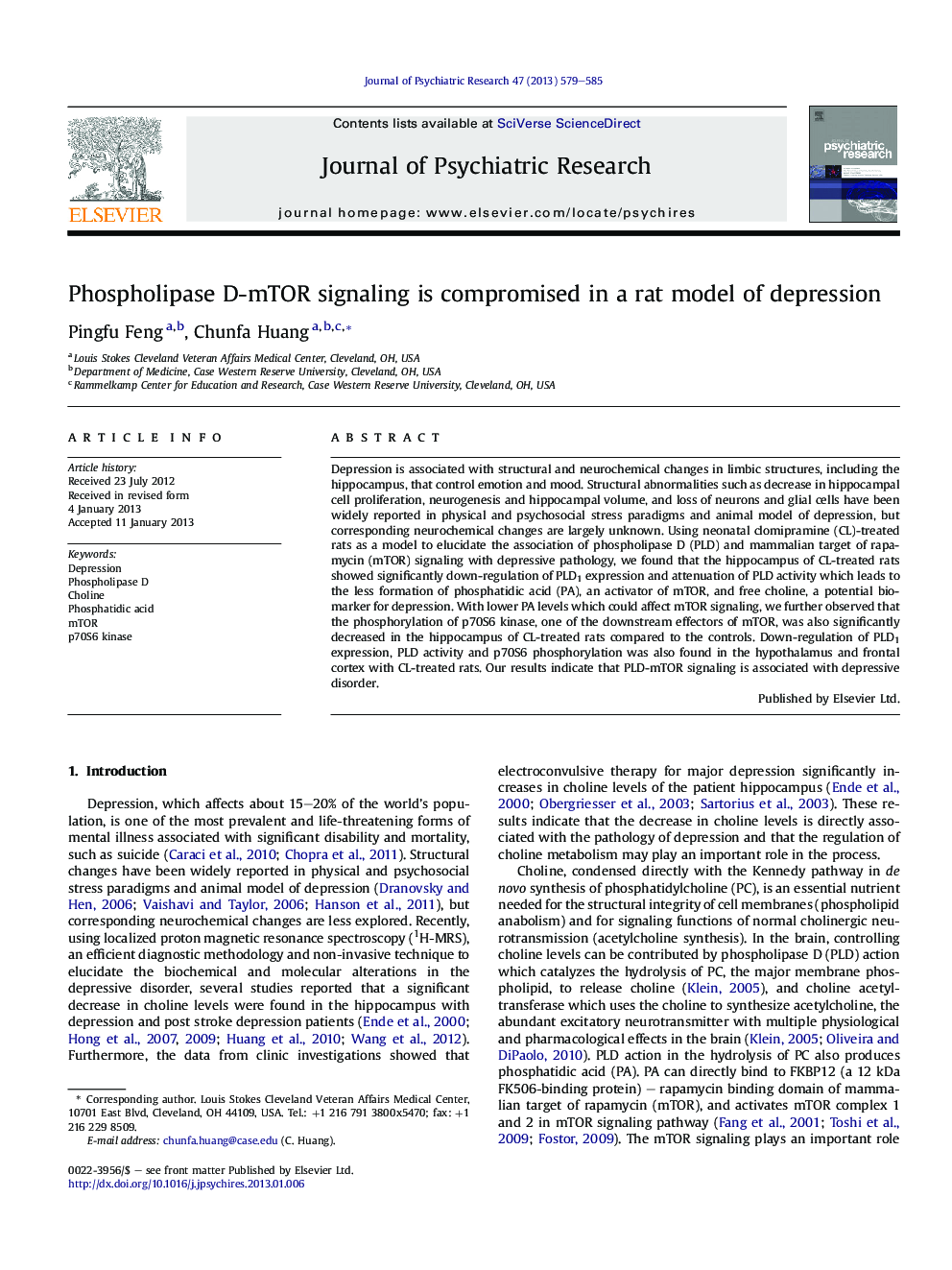| کد مقاله | کد نشریه | سال انتشار | مقاله انگلیسی | نسخه تمام متن |
|---|---|---|---|---|
| 327357 | 542852 | 2013 | 7 صفحه PDF | دانلود رایگان |

Depression is associated with structural and neurochemical changes in limbic structures, including the hippocampus, that control emotion and mood. Structural abnormalities such as decrease in hippocampal cell proliferation, neurogenesis and hippocampal volume, and loss of neurons and glial cells have been widely reported in physical and psychosocial stress paradigms and animal model of depression, but corresponding neurochemical changes are largely unknown. Using neonatal clomipramine (CL)-treated rats as a model to elucidate the association of phospholipase D (PLD) and mammalian target of rapamycin (mTOR) signaling with depressive pathology, we found that the hippocampus of CL-treated rats showed significantly down-regulation of PLD1 expression and attenuation of PLD activity which leads to the less formation of phosphatidic acid (PA), an activator of mTOR, and free choline, a potential biomarker for depression. With lower PA levels which could affect mTOR signaling, we further observed that the phosphorylation of p70S6 kinase, one of the downstream effectors of mTOR, was also significantly decreased in the hippocampus of CL-treated rats compared to the controls. Down-regulation of PLD1 expression, PLD activity and p70S6 phosphorylation was also found in the hypothalamus and frontal cortex with CL-treated rats. Our results indicate that PLD-mTOR signaling is associated with depressive disorder.
Journal: Journal of Psychiatric Research - Volume 47, Issue 5, May 2013, Pages 579–585